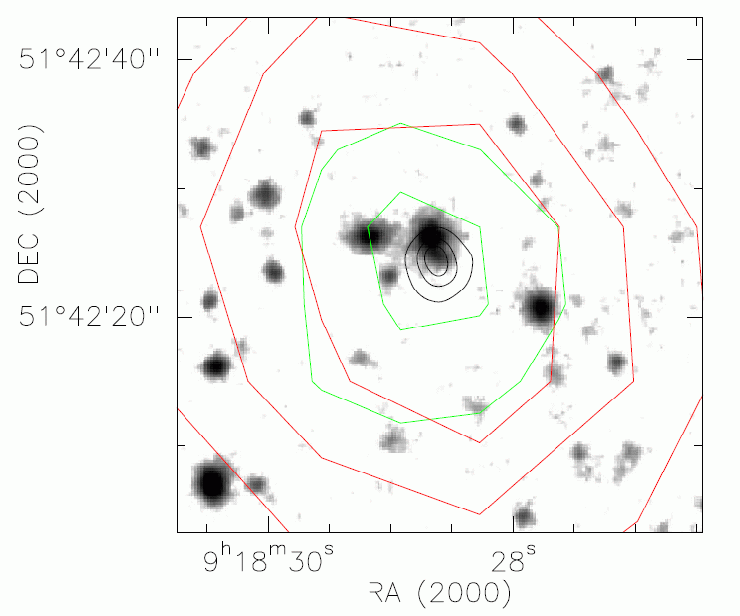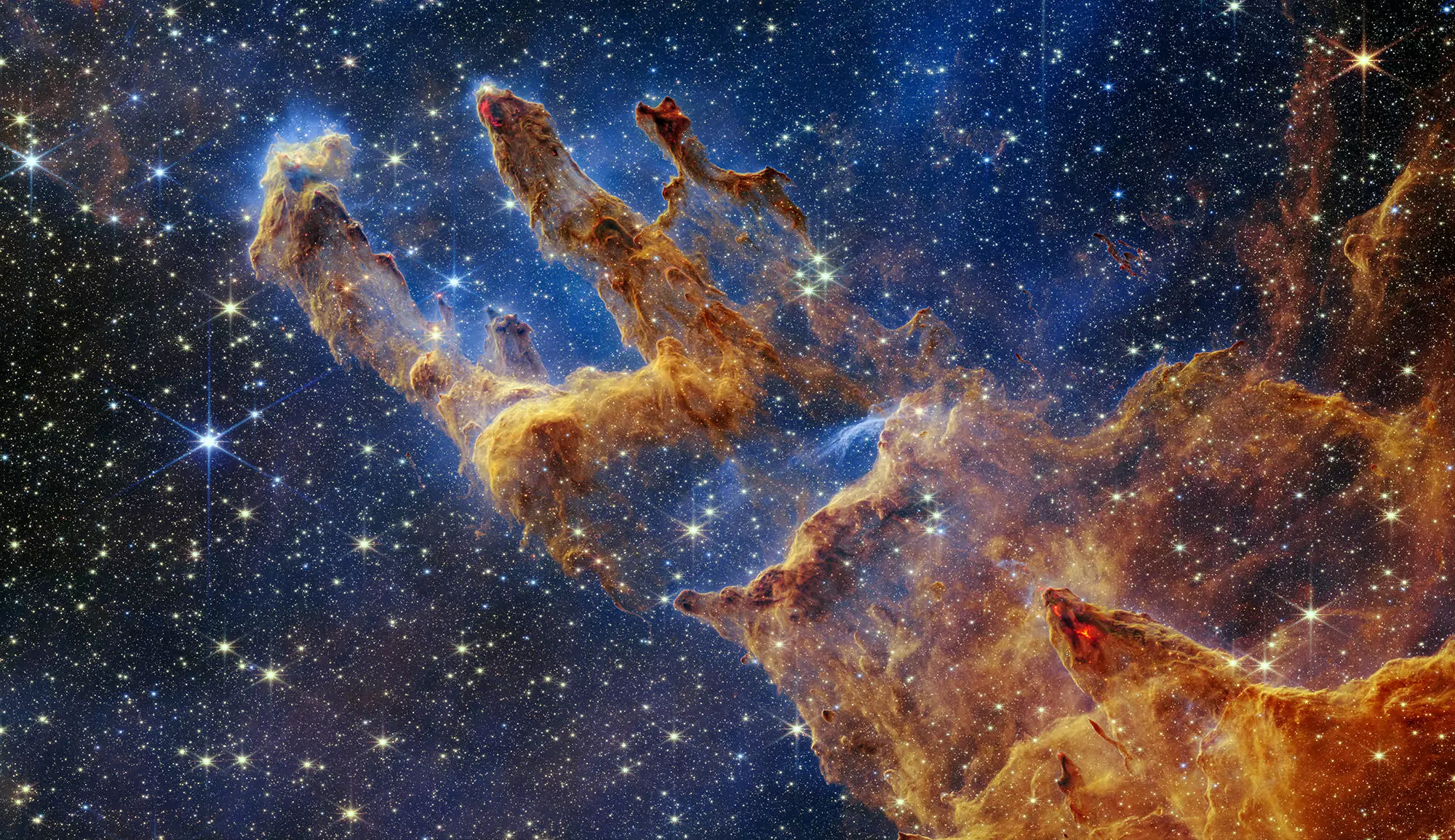In the star formation history of the Universe, it appears a great maximum of activity between the redshifts z=1 and z=3, which corresponds to epochs 2 to 6 billion years after the Big-bang. These starbursts radiate primarily thanks to their dust heated by young stars hidden in their cocoon. This emission has its maximum around 0.1 mm in wavelengthin the reference frame of the galaxy, and can be detected between 0.2 and 0.4 mm, once redshifted by the expansion of the Universe. If there exist primordial galaxies even more remote, one should be able to detect them between 0.5 and 1mm in wavelength, the submillimeter domain. However, very little was detected until now.

To explore these primordial galaxies, the team of astronomers has carried out a survey, with the infrared and submillimeter satellite Herschel, of hundreds of galaxy clusters. Those are used as " gravitational telescope", thanks to their lensing effect. In the wavelength domain considered, the foreground galaxies contribute only in a negligible way to the emission, and the remote galaxies, if they exist, must dominate. By observing the galaxy cluster Abell 773, an extremely bright source was detected. The redshift of Abell 773 is z=0.22, which places it at a distance of about 3 billion light-years from us.

Once this strong submillimeter source detected in continuum, the team undertook to determine its distance and its nature, by a follow-up on the ground. The SMA interferometer allowed to precise the position, with a 2 arcseconds resolution (Figure 1). The visible image obtained with the Subaru telescope shows a foreground galaxy which is approximately 1 arcsecond North. The optical spectrum of this galaxy was obtained on the Keck II telescope with DEIMOS, and, surprise, the galaxy does not belong to the cluster Abell 773, but is more distant with z=0.63. It is however this galaxy which contributes to the bulk of the gravitational amplification. Considering the North-South elongated contours of the source seen with SMA, and also EVLA, undoubtedly the separation of the gravitational images of the source is of order of 2". This allows to make a approximate model of the lens, and deduce an amplification factor of 11.

Finally the source was observed with the 30m telescope of IRAM, and also the Plateau de Bure. The wide band receiver EMIR allowed to explore quickly a large bandwidth, between 81 and 115 GHz, and to detect several lines of the CO molecule, which give thus the redshift of the source z=5.243 (cf Figure 2). This hyper-luminous source was formed only a billion years after the Big-bang ! The two velocity components suggest the presence of two galaxies in interaction. The high excitation of the CO molecule indicates the presence of a starburst, and perhaps an active nucleus (Figure 3). It is the first time that the [NII]205micron line is detected at high redshift. This line which traces ionized gas, reveals a quite developed blue velocity component, which suggests a significative ionized gas flow, corresponding to line wings in the molecular spectra : undoubtedly a strong gas ejection, due to supernovas and stellar winds. This outstanding source will be studied now in more detail, with high spatial resolution.
Reference
- A bright z=5.2 lensed submillimeter galaxy in the field of Abell 773 : HLSJ091828.6+514223 F. Combes (Obs-Paris), M. Rex (Tucson), T. D. Rawle (Tucson), E. Egami (Tucson), F. Boone (Toulouse), I. Smail (Durham), J. Richard (Lyon), R.J. Ivison (Edinburgh), M. Gurwell (Harvard), C.M. Casey (Hawaii), A. Omont (IAP-Paris), A. Berciano Alba (ASTRON), M. Dessauges-Zavadsky (Geneva), A.C. Edge (Durham), G.G. Fazio (Harvard), J-P. Kneib (Marseille), N. Okabe (Taipei), R. Pello (Toulouse), P. G. Perez-Gonzalez (Madrid), D. Schaerer (Geneva), G.P. Smith (Birmingham), A.M. Swinbank (Durham), P. van der Werf (Leiden) Astronomy and Astrophysics, in press
